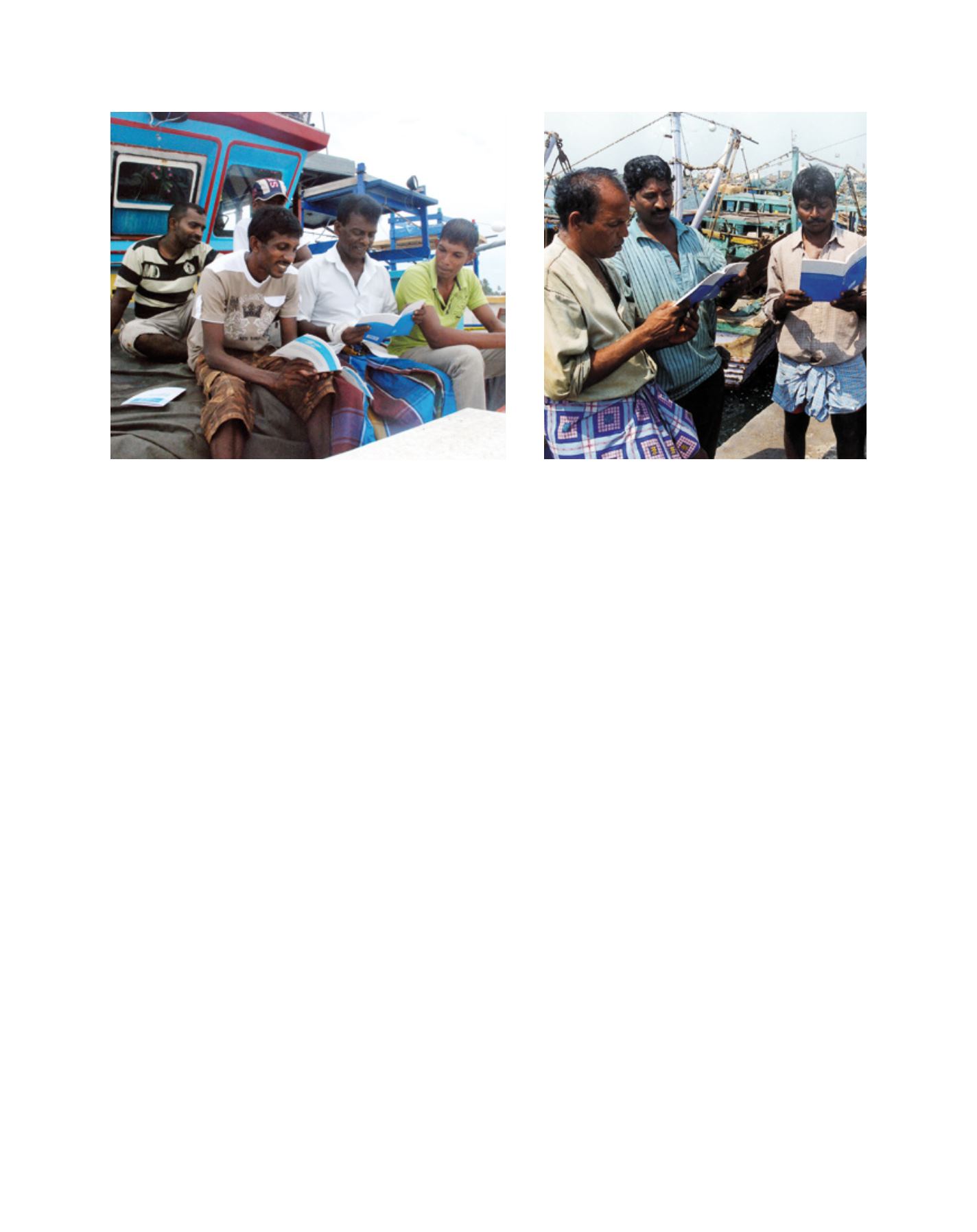

[
] 75
the Food and Agriculture Organization (FAO) of the United Nations
in October 1995, the Code took many years, marathon effort, formi-
dable expertise and substantial resources to develop. The Code is
also an outcome of several contemporary global initiatives. It is
elaborate and is directed at everyone concerned with conservation
of fishery resources and management and development of fisheries.
However, the main weakness of the Code springs partly from its
strength. Its language is dry and legal and does not make for easy
reading or comprehension.
To allow the Code to reach a critical mass of fisheries practition-
ers in its member countries, the BOBP and later the BOBP-IGO have
undertaken several activities to popularize it and improve its dissemi-
nation. The most significant among these activities is the translation
of the Code, its concise version and the technical guidelines into
several Indian languages spoken in the coastal states of the country
and also into the national languages of Bangladesh (Bangla), Maldives
(Dhivehi) and Sri Lanka (Sinhala). Each vernacular version is printed
in large numbers to allow for distribution to the stakeholders.
In addition, several workshops, seminars and interactive meetings
with stakeholders have helped to communicate with fisher commu-
nities and stimulate debate and discussion about the meaning of
the Code and the implementation of its technical guidelines. These
interactions have thrown up innovative ideas on adaptation of
the Code to meet the local needs of communities. It has also been
suggested that the Code should be made a part of the school curric-
ulum. A special syllabus or a supplementary school programme
could be considered for coastal areas, with a focus on fisheries. The
fundamentals of conservation, management and responsible fisher-
ies could be taught in an interesting way. Since this is already being
done in Maldives, that country’s experience could be of interest to
other countries in the region.
Communication the key to successful education
The BOBP and the BOBP-IGO have, over the years, found that commu-
nication can help improve the understanding of perceptions, world
views and frameworks of logic. Appropriate awareness-building can
bridge differences by building new structures of learning
on traditional foundations of knowledge.
12
In the course
of developing communication tools for small-scale fishers,
several lessons have emerged:
• The success of any programme for development of
small-scale fisheries largely depends on the ability
of fisheries agencies to inform, communicate with,
motivate and mobilize fisher communities
• Fishers are aware of the dangers of overfishing, but
they need education and orientation on resource
depletion trends and patterns, fish behaviour,
management methods and tools
• The connection between development and data/
information is obvious, but a strong disconnect
between the two characterizes fisheries in most
developing countries
• Gaps in fisheries information should be plugged, to
enable better analysis and decision-making
• Involving fishers in information gathering may lead
to more reliable data
• Messages blended with popular forms of
entertainment in vernacular languages reach
audiences more rapidly than meetings and
workshops.
The diverse initiatives undertaken by the BOBP and
the BOBP-IGO show that education and awareness are
fundamental tools for enterprise building among poor
communities. Enterprise development requires educa-
tion to instil knowledge, which does not necessarily
lead to resolution of problems, but helps in promoting
better understanding of the issues and also in finding
solutions. Raised awareness leads to active local partici-
pation in the resource management process, which is
a precursor to a participatory approach to fisheries
management.
The Code of Conduct for Responsible Fisheries has gained wide acceptance and Indian fishers can read the Code in their own languages
Images: S Jayaraj, BOBP-IGO
















